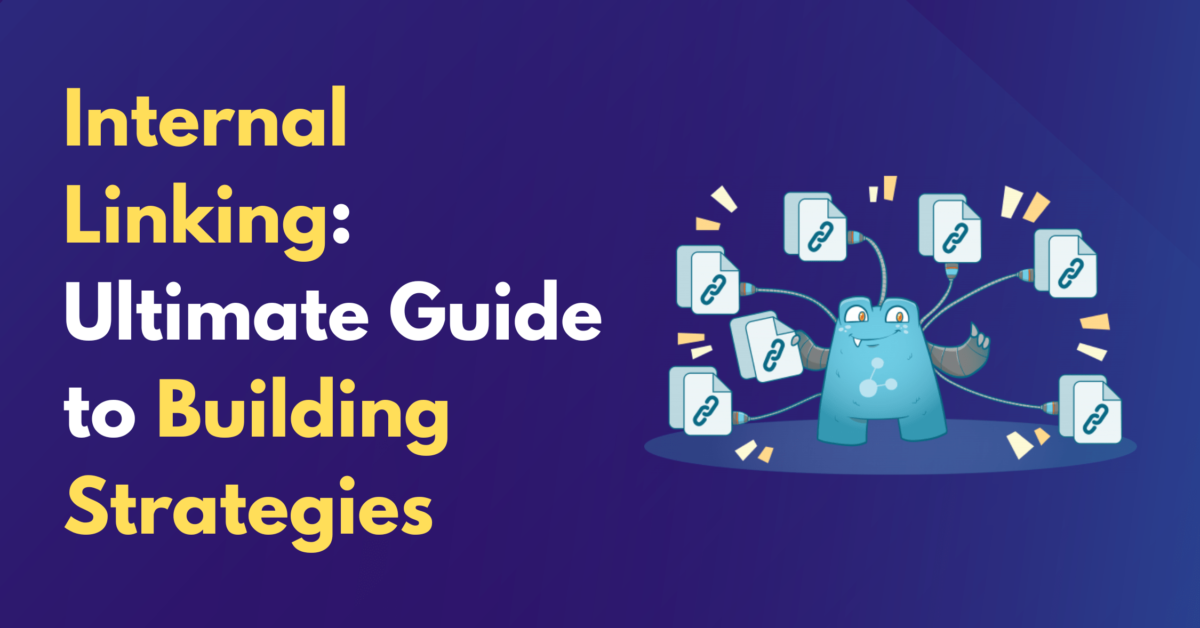Internal Linking Ultimate Guide to Building Strategies
Introduction
Internal links are a crucial part of successful SEO strategies.
Simple yet sophisticated, compact yet powerful, internal links help users navigate your digital content and provide search engine crawlers with details about the functionality of your website.
Internal links are found on almost every page of the internet. You’re probably already using them, even if you are not aware of it.
If you want to optimize your content for SEO, you need to understand how internal links work, where to place them, and why it is important.
In this post, we’ll dive into internal linking and cover best practices and how to build internal linking strategies.
What is Internal Linking?
Internal links are links from one page to another within the same domain. These vary from external links, which link to pages on other websites. Internal linking ought to be used on all websites with several pages. Search engines anticipate internal linkage, which is a straightforward matter of site layout and design. All websites have a design and architecture that maintains them structured rationally, such as this typical silo concept.
Of course, there are many more intricate aspects to site architecture and structuring.
Search engines will, however, crawl, index, and rank your website if it has a robust internal linking structure. Another crucial component of your user experience is internal linking, which extends dwell time by helping consumers locate relevant content or what they’re looking for.
Also Read: Mastering On-Page SEO Techniques: A Comprehensive Guide
Types of Internal Linking in SEO
There are a few different types of internal links: navigational, footer, and contextual.
Here’s how they appear on your site.
Navigation Links:
Primary Navigation: The primary navigation menu is like the table of contents for your website, featuring links to the most important and frequently visited pages. It provides a clear structure for users to explore your site’s core content.
Secondary Navigation: Secondary navigation menus or dropdown menus often serve to categorize or further organize content, especially on larger websites. They help users find specific information within sections or subsections of the site.
Contextual Links:
Contextual links are strategically placed within the content of a webpage to enhance the user experience and provide additional, relevant information. They can guide users to related articles, resources, or sections of the site that complement the current topic. These links are particularly valuable for SEO because they demonstrate the content’s context and relevance.
Footer Links:
Footer links are typically found at the bottom of web pages and provide users with easy access to critical information and site-wide resources. These links often include pages like the Privacy Policy and Terms of Service, which are essential for legal compliance and user trust. The footer can also contain links to the Sitemap or Contact Us page, ensuring that users can navigate to these important areas from any page on the site.
Effective use of these types of internal links not only enhances the user experience but also plays a significant role in SEO by improving site structure, user engagement, and search engine crawlability.
Also See: Creating High-Quality Content: On-Page SEO Best Practices
Internal Linking Best Practices
Internal linking is a crucial aspect of website SEO structure. Here are some best practices for internal linking to maximize the benefits for both users and search engines:
Use Descriptive Anchor Text:
Use anchor text that accurately describes the linked content. Descriptive anchor text optimization provides users and search engines with valuable context about where the link leads.
Link to Relevant Content:
Ensure that your internal links point to content that is contextually related to the topic of the current page. This helps users find additional information or resources that are directly related to their interests.
Prioritize User Experience:
Internal linking should enhance the user experience, so make sure the links make sense within the content and help users navigate your site more effectively. Avoid overloading pages with too many links.
Follow a Logical Hierarchy:
Create a logical hierarchy for your internal links. Primary navigation should lead to the most important sections, while secondary links can guide users to subsections or related content.
Use HTML Markup:
Properly implement internal links using HTML markup (e.g., <a> tags). Avoid using JavaScript or other techniques that might prevent search engines from crawling and indexing the links.
Avoid Orphaned Pages:
Ensure that all pages on your website are accessible through some form of internal link. Avoid having orphaned pages (pages with no internal links pointing to them) because search engines may have difficulty indexing them.
Regularly Audit and Update Links:
Websites evolve over time, and so should your internal linking strategy. Regularly review your internal links to ensure they remain relevant and functional. Remove or update broken links.
Optimize for Mobile:
Make sure that your internal links are mobile-friendly. Users should be able to tap on links easily, and the links should not disrupt the mobile user experience.
Avoid Duplicate Content:
Don’t link to pages with duplicate or near-duplicate content. Duplicate content can confuse search engines and dilute the authority of the original content.
Use Sitemaps:
Consider creating XML and HTML sitemaps. XML sitemaps are used by search engines to discover and index your content, while HTML sitemaps provide users with a clear structure for navigation.
Track and Analyze Performance:
Use analytics tools to monitor the performance of your internal links. Pay attention to click-through rates, user engagement, and any changes in organic search traffic. Use this data to identify areas for improvement.
Avoid Over-Optimization:
While it’s essential to optimize your internal links in SEO, be cautious about over-optimization, such as using exact match keywords in every anchor text. Focus on providing value to users first and foremost.
Use Nofollow Tags Sparingly:
While nofollow tags can be used to prevent search engines from following certain links, use them judiciously and primarily for links to pages you don’t want indexed or pages with user-generated content (e.g., comments).
By following these best practices for internal linking, you can create a well-structured and SEO-friendly website that offers a superior user experience and is more likely to rank well in search engine results.
Conclusion
Internal linking is a core part of a solid SEO strategy. When done right, it enhances the user experience and can help you rank higher in the SERPs. Metaloop Marketing’s internal link service for SEO offers a comprehensive and strategic approach to improving website performance and search engine visibility.
Their service encompasses various critical elements, including content audits, keyword research, and the creation of a logical link hierarchy. With Metaloop Marketing’s internal link service, you can expect a tailored and data-driven solution designed to enhance your website’s performance and achieve SEO success.



Write a Comment